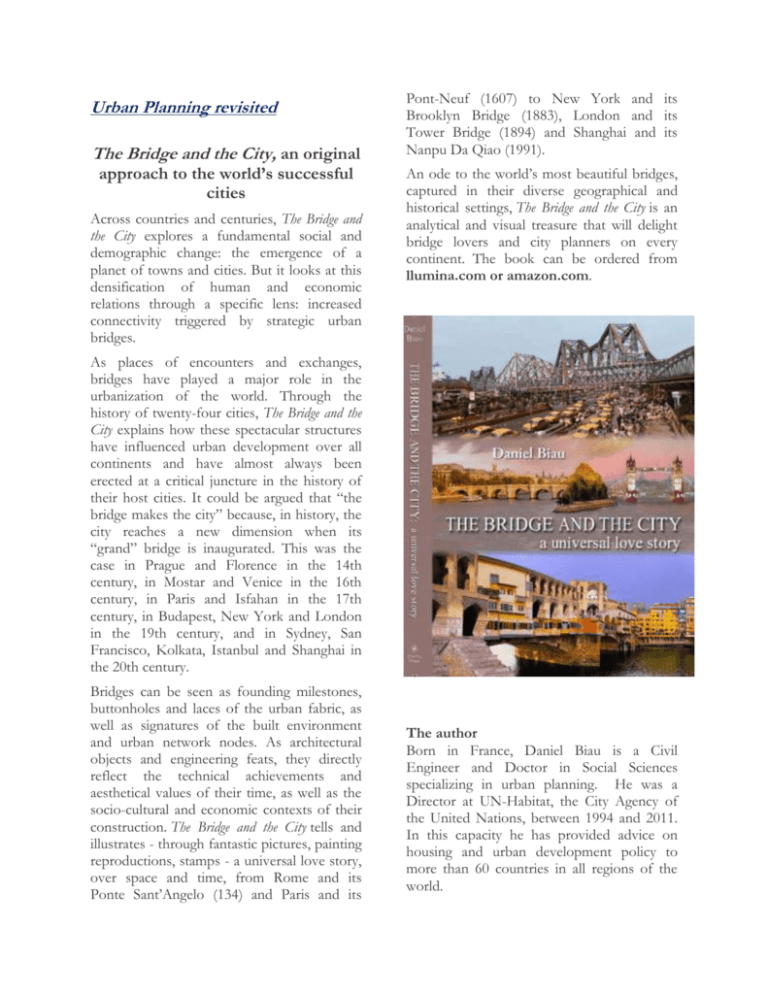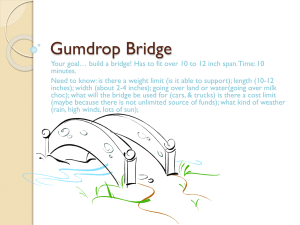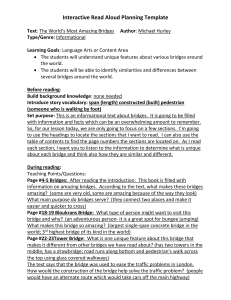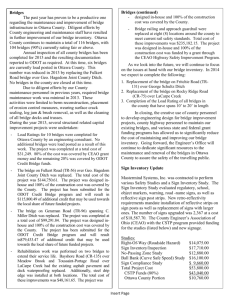The Bridge and the City, an original approach to the world`s
advertisement

Urban Planning revisited The Bridge and the City, an original approach to the world’s successful cities Across countries and centuries, The Bridge and the City explores a fundamental social and demographic change: the emergence of a planet of towns and cities. But it looks at this densification of human and economic relations through a specific lens: increased connectivity triggered by strategic urban bridges. Pont-Neuf (1607) to New York and its Brooklyn Bridge (1883), London and its Tower Bridge (1894) and Shanghai and its Nanpu Da Qiao (1991). An ode to the world’s most beautiful bridges, captured in their diverse geographical and historical settings, The Bridge and the City is an analytical and visual treasure that will delight bridge lovers and city planners on every continent. The book can be ordered from llumina.com or amazon.com. As places of encounters and exchanges, bridges have played a major role in the urbanization of the world. Through the history of twenty-four cities, The Bridge and the City explains how these spectacular structures have influenced urban development over all continents and have almost always been erected at a critical juncture in the history of their host cities. It could be argued that “the bridge makes the city” because, in history, the city reaches a new dimension when its “grand” bridge is inaugurated. This was the case in Prague and Florence in the 14th century, in Mostar and Venice in the 16th century, in Paris and Isfahan in the 17th century, in Budapest, New York and London in the 19th century, and in Sydney, San Francisco, Kolkata, Istanbul and Shanghai in the 20th century. Bridges can be seen as founding milestones, buttonholes and laces of the urban fabric, as well as signatures of the built environment and urban network nodes. As architectural objects and engineering feats, they directly reflect the technical achievements and aesthetical values of their time, as well as the socio-cultural and economic contexts of their construction. The Bridge and the City tells and illustrates - through fantastic pictures, painting reproductions, stamps - a universal love story, over space and time, from Rome and its Ponte Sant’Angelo (134) and Paris and its The author Born in France, Daniel Biau is a Civil Engineer and Doctor in Social Sciences specializing in urban planning. He was a Director at UN-Habitat, the City Agency of the United Nations, between 1994 and 2011. In this capacity he has provided advice on housing and urban development policy to more than 60 countries in all regions of the world. Connected World Cities and their Bridges lLo Paris London Istanbul IO L New York Shanghai Istanbul San Francisco Calcutta Saint Petersburg











